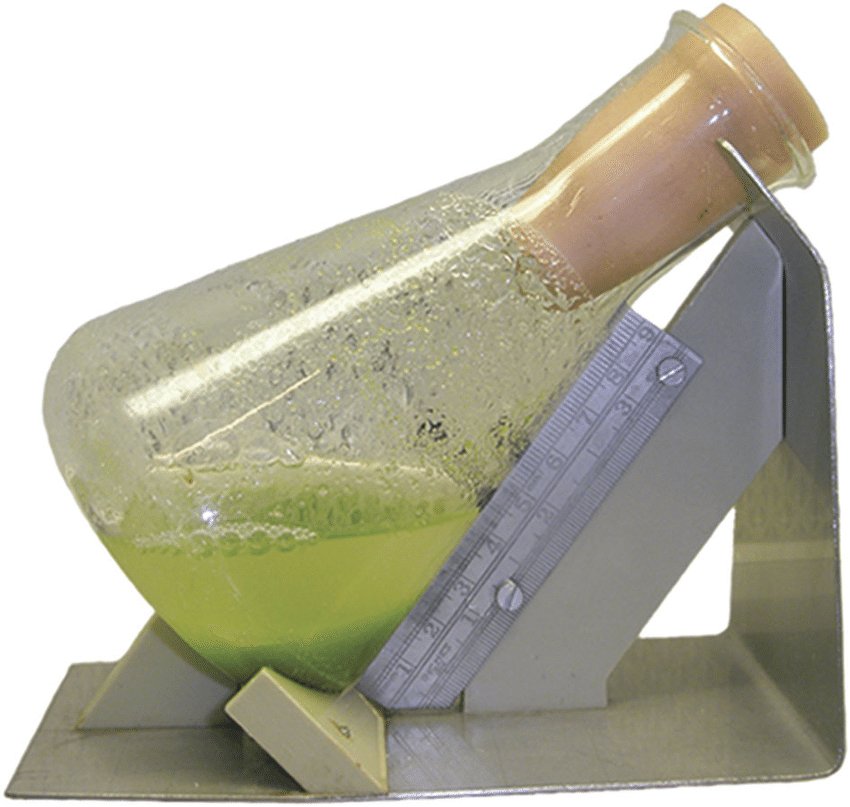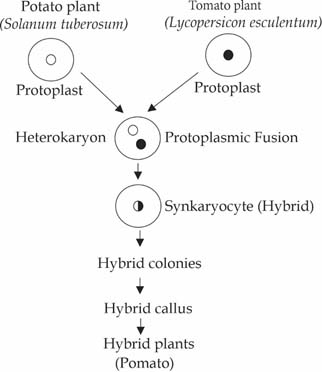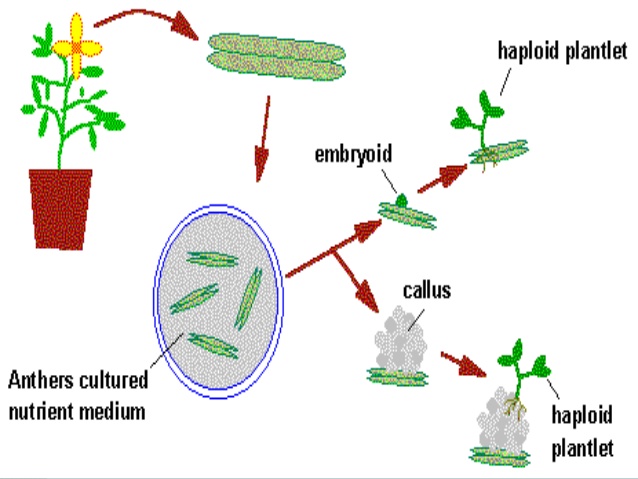-
CALLUS CULTURE
Callus is amorphous mass of loosely arranged thin walled parenchyma cells developing from proliferating cells the parent tissue. Plants are regenerated by forming a normal shoot, root and embryoids ultimately forming a plant.
Importance:
- Plant breeding: Callus culture provides genetic variability which is important for successful plant breeding.
- Somaclonal variations: Many agriculturally useful variants have been obtained through somaclonal variation.
2, CELL SUSPENSION CULTURE
It is the culture of isolated cells or very small cell aggregates dispersed in liquid medium. Cell suspension is prepared by transferring a fragment of callus to the liquid medium and agitating them. The suspension includes single cell, cell aggregates and dead cells.

Fig: Suspension culture
Importance:
- To study metabolism: It is used to study the physiological, biochemical and metabolic
characteristics of plant cells.
- Stress tolerance: suspension culture used to isolate the cells resistant to salts, herbicides, metals and drought conditions.
- Genetic variability: by using different mutagens (chemicals) genetically different plants can be produced.
III. PROTOPLAST CULTURE
Protoplast (cell minus cell wall) is the biologically active and most significant material of cells. When cell wall is mechanically or enzymatically (using cellulose, hemicellulose, pectinase, etc.) removed the isolated protoplast is known as “naked plant cell”. The isolated protoplasts may be used to regenerate the plants directly, or for the production of somatic hybrids through fusion.
Protoplast fusion and somatic Hybridization:
- The fusion of protoplasts of genetically different lines or species has been possible. Plants that are incompatible in normal sexual crosses, may be produced by somatic fusion.
- Production of fertile amphidiploid somatic hybrids of incompatible species.
- Transfer useful genes from one species to another.

Fig: Somatic Hybridization
5. EMBRYO CULTURE
The embryos are isolated from young seeds and placed on a solid medium containing nutrients and vitamins. The embryos are cultured at 25° C, first in dark until seedlings are about 2 cm long and root formation has started, and then in the light until the seedlings can be planted in soil.
ANTHER AND POLLEN CULTURE (PRODUCTION OF HAPLOID PLANTS):
Anther, male reproductive organ, is diploid in chromosome number. Tetrad of haploid microspores are produced from microspore mother cells in anther. The anther (microspores) or pollen are cultured to get haploid plants (having single complete set of chromosomes).

Fig: Anther culture
Importance:
- Direct screening of recessive mutation because diploid or polyploid screening of
recessive mutations is not possible.
- Development of homozygous diploid plants following chromosomal doubling of haploid plants by the application of colchicine.
VI OVULE CULTURE:
It is much easier to culture whole ovule than to isolate a single embryo, especially in small-
seeded plants. Ovule culture allows direct hybridization of various species such as Gossypium (cotton), Nicotiana (tobacco), Brassica, etc.
VII. MICROPROPAGATION
Micropropagation may be defined as in vitro asexual propagation of crop plants. This technique is advantageous over the conventional practice of asexual propagation as only a small amount of plant is needed, species highly resistant to conventional bulk propagation can be propagated by this method, and it is season independent.
VIII: SOMATIC EMBRYOGENESIS
Embryo production is a characteristic feature of the flowering plants. However, such structures (embryoids) have also been artificially induced in culture plant tissues, beside zygote.
Zygotic embryo: It is formed by the zygote.
Non zygotic embryo: It is formed from the cells other than the zygote it is of following types
- Somatic embryos: It is formed from somatic cell in-vitro.
- Parthenogenetic embryo: It is formed by unfertilized egg.
- Androgenic embryo: It is formed by the pollen grains.
Generally somatic embryos called embryoids are similar to zygotic embryo except they originate from somatic cells and a larger in size.


Fig: Somatic embryos of tobacco